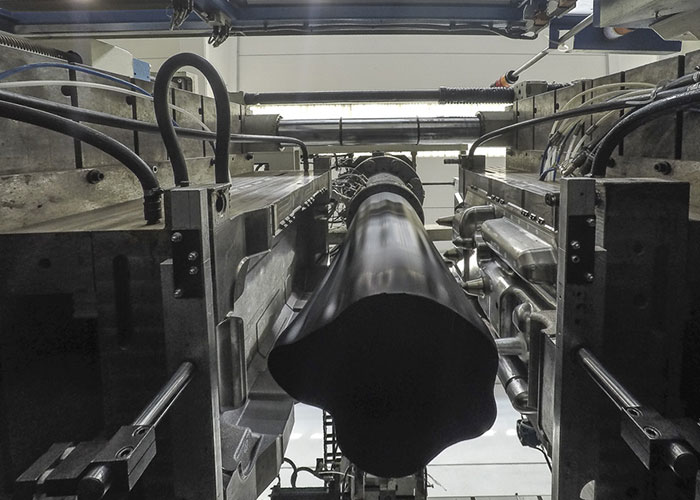Polyurethane foam moulding is a technology in continuous evolution. According to their characteristics and their respective areas of application, it includes two different types: rigid and flexible polyurethane foam.
- Rigid polyurethane foam is a polyurethane foam with high density closed cells, and it is applied mostly by “spraying”, which reduces costs and time. The compound is sprayed on the object to be isolated, as a common painting, even on surfaces which are arranged vertically, and the consolidation is usually completed within twenty seconds. Particularly, panels in rigid polyurethane foam with flexible coatings are produced with different thicknesses and coatings and are used depending on the application requirements; on the other hand, panels in rigid polyurethane foam with rigid coatings found the basis of the light prefabrication and are produced through continuous or discontinuous systems, depending on the type of panel. Finally, the blocks in rigid polyurethane foam can be produced with either continuous or discontinuous systems to form parallelepipeds of polyurethane foam that can be cut into sheets of various thicknesses or machined, after an appropriate mellowing, causing complex shapes.
- The flexible polyurethane foam is a polyurethane foam open cells with soft consistency, which manages to assume a solid form until triplicating its volume, covering any cracks, due to the chemical reaction between the two components. There are special fireproof foams intended for fixation of fireplace pipes and fire doors and can be obtained by casting or moulding. In the casting process the various components of the reaction are continuously cast onto a conveyor belt up to the creation of a block that, at the end of the reaction, can be cut into pieces of the desired length and, after maturation, in slabs and sheets of thickness supporting the customer needs. On the other hand, moulding production takes place in a mould for casting (low-pressure) or injection (high-pressure) and results into preformed pads ready for use, without the necessity of further cuts or notches. With all the experience acquired in almost 30 years of activity and due to the mixing of different components, it is precisely in the moulding that Fisem manages to obtain shims and especially smoothness, meeting customer requirements.
The main characteristics of rigid and flexible polyurethane foam
The characteristics of the rigid polyurethane foam moulding back up the reputation as one of the best technologies used for thermal and acoustic insulation: due to its high mechanical strength and high insulating power, this material is therefore not subject to transformations associated, for example, to water absorption. Whereas, flexible polyurethane foam for moulding has the ideal features for the making of pads: comfort and softness, support and duration in time, hygiene, flexibility, it is also possible to reinforce by the incorporation of inserts.
Fields of application for rigid and flexible polyurethane foam moulding
The rigid polyurethane foam and the flexible polyurethane foam moulding have different application sectors, according to their characteristics.
The rigid polyurethane foams are often injected directly into the body of the boiler, in the structures of refrigerators and in the packaging of insulating panels for the building industry. In fact, the major fields of application of this type of expanded polyurethane are connected with the thermal insulation of walls, floors and coverings, air ducts, refrigeration industry, industrial modelling, etc.
On the contrary, flexible polyurethane foams are used for the production of pads for furnishings, seats, saddles and backs and seats in the automotive sector, shaped seats intended for the protection of delicate instruments, surfaces to be acoustically isolating.
Thanks to this technology, Fisem manufactures different comfort saddles for many companies in the motorcycle field, seats for the railway transport, and special seats for the automotive industry and furnishings. The experience developed over time and the desire to keep pace with the evolution of the market qualify Fisem to offer the customer multiple solutions in the processing of flexible polyurethane foam.



